POST
July 27 , 2023
3 PERFECT DAYS IN ISTANBUL
The ideal city break to bookend your cruise or Mediterranean adventure.
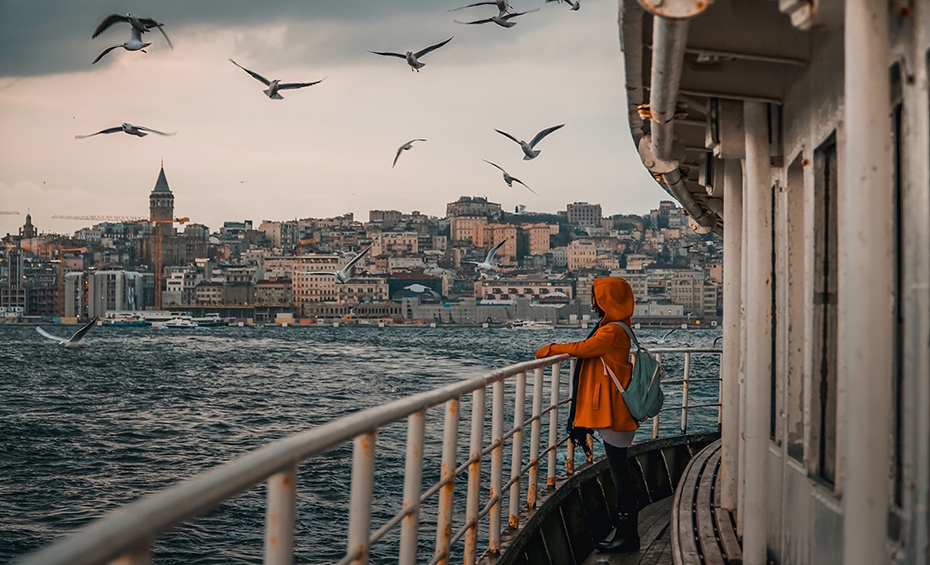
Why visit Istanbul now?
“İstanbul is the New Cool.” The latest marketing slogan from GoTürkiye (the tourism ministry’s official global promotional platform) aims to highlight all that is youthful and modern in the country’s largest metropolis. The ‘bridge between east and west’, Istanbul is commonly thought of in terms of its historic prowess and unique geographical location. However, in the past couple of years we’ve seen a freshness in its restored touristic sites and a determination in the ever-present creative spirit of the city’s residents, who always find a way in spite of the challenges they face as a nation.
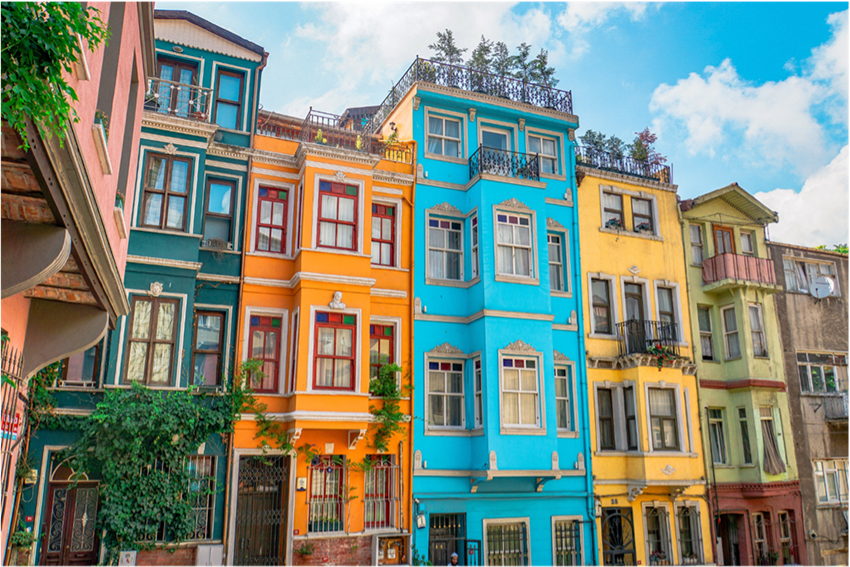
Image credit: Clive Kim on Pexels
2023 has been a tough year so far for Türkiye, with a devastating earthquake in the southeastern region in February, and hyperinflation continuing into the summer. Traveling to Türkiye will certainly be easy on your budget, but, more importantly, you can help local businesses that really need it right now. Maybe that’s part of the reason ‘Travel + Leisure’ readers just voted Istanbul as the #1 city in Europe for the 2023 ‘World’s Best Awards’.
Why take a cruise from Istanbul?
First of all, there’s the new cruise ship dock/open-air mall complex called Galataport, which opened in 2021 and has since unveiled more and more shiny restaurants, mid-range to upscale shops, and gallery spaces.
.png)
Image credit: Sina HN Yazdi on Unsplash
In May 2023, the new-and-improved Istanbul Modern finally re-opened its doors right at Galataport’s main square, in a stunning space designed by renowned Italian architect Renzo Piano. The queen of Istanbul’s art museums houses major contemporary works from Turkish and foreign artists, as well as a cinema salon, panoramic rooftop views over the Golden Horn, the Old City and Galata Tower, and a highly-rated scenic restaurant.
The most unique thing about Galataport, as far as cruise ports go, is its incredibly convenient location right in the heart of the city – both the modern and historic sides!
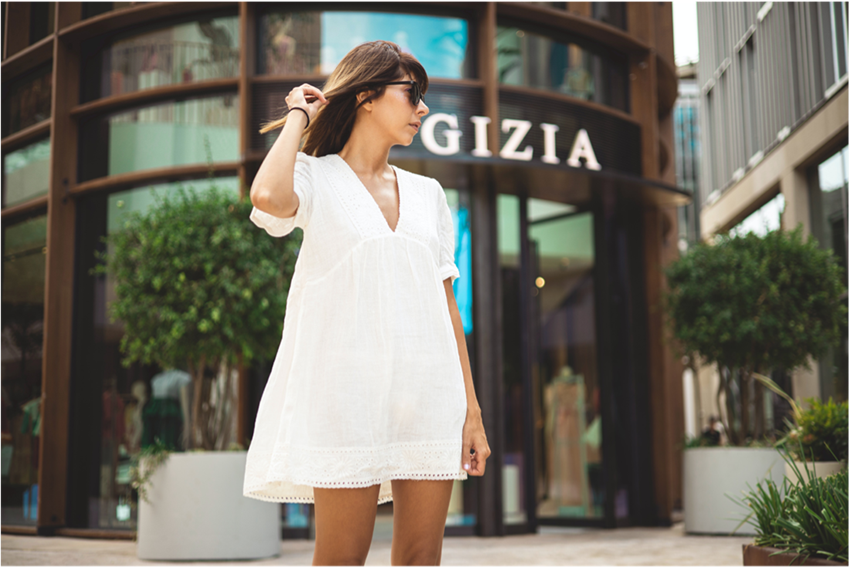
Image credit: Armin Pourramezani on Unsplash
As soon as you step off the boat, you can experience local dining and shopping, and then dive into the winding backstreets of Karaköy lined with independent boutiques and coffee shops, where a young crowd sips flat whites in the shadow of the several old orthodox churches here. Don’t forget to stop at the historic Karaköy Güllüoğlu (they’ve also just re-opened in a shiny new shop this year) for the city’s best baklava and a glass of tea. Or, you could relax your muscles and have an authentic Turkish hamam experience at one of the city’s best bathhouses – the beautiful Kılıç Ali Paşa Hamam – tucked in right between Galataport and the streets of Karaköy.
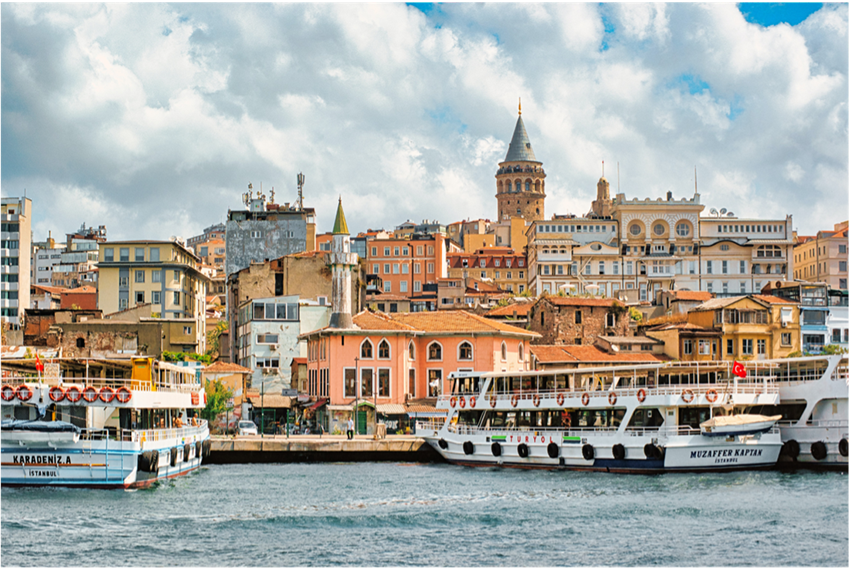
Image credit: Ibrahim Uzun on Unsplash
Keep walking to Galata Bridge, a landmark of the city that is dominated by fishermen casting their rods up on the top level, with fish restaurants down below. Taking the tram across the bridge will give you even quicker access into Istanbul’s ‘Old City’ with its celebrated Ottoman treasures.
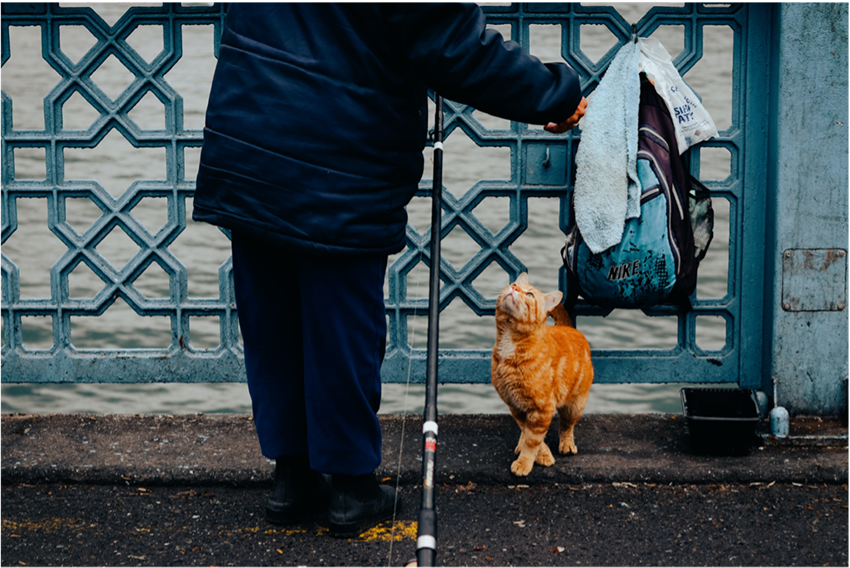
Image credit: Fatih Guney on Pexels
From Istanbul, where can you cruise to?
Cruises out of Istanbul can take you all over from the Mediterranean to Northern Europe, and to Asia and the Middle East. Start off among the dazzling Turkish Coast and Greek Islands, and nearby is the Adriatic Sea featuring Croatia and Montenegro. Discover western Europe with cruises that end in Venice, Rome, Barcelona, or continue through the Strait of Gibraltar around to Portugal and then up to Northern Europe. Routes from Istanbul can take you all the way to finish in Miami, or on a once-in-a-lifetime journey east to the Holy Land and the ancient sands of Egypt and Dubai. Some cruiselines we recommend (and can book for you!) include Azamara, Oceania, Viking and Windstar.
How many days to spend in Istanbul?
A cruise makes a great excuse to come to Istanbul (so does a long flight stopover), and it’s also a major hub destination that’s easy to add on to a more extensive Mediterranean itinerary. First-time travelers will need 2 days to discover the Old City district, plus another day to get a more well-rounded picture, so in total, 3 nights in Istanbul is really the minimum.
Without further ado, here’s a first-timer’s guide to ‘3 Perfect Days in Istanbul’.
ARRIVE IN ISTANBUL
Arrive in Istanbul by plane or boat to begin your adventure. Flying from North America, a majority of the direct flights with Turkish Airlines arrive in the afternoon to evening hours.

Image credits: Caner Cankisi on Pexels ; Matbah Restaurant
You may like to plan ahead for a nice dinner, so you don’t have to spend any time searching and decision-making when you’ve just had a long trip. For an excellent meal in the Old City, Matbah is a reliable option for traditional Ottoman cuisine and splendid architectural views. If you want one of the best panoramic views in the city, you can opt for 360istanbul, offering award-winning Turkish meze fusion rooftop dining with views from all sides. For the most authentic fish restaurant experience, it’s worth it to take a taxi and visit the Arnavutköy neighborhood. This waterfront area has some great fish resturants, like Sur Balık, as well as a charming atmosphere with typical old wooden buildings and narrow cobbled lanes.
DAY 1: OLD CITY MONUMENTS
Start the day with breakfast like you’ve never seen it! Turks take big pride in their breakfast spread. On the savory side, you’ll find a variety of cheeses, olives, fresh tomatoes, cucumbers, sprigs of herbs, slices of garlicky sausage, boiled eggs, and maybe a juicy egg-tomato-pepper dish called menemen. In the sweet section, you’ll be acquainted with the locals’ love of jams, sticky grape molasses you can mix with tahini, thick yogurt, and the king of breakfast – kaymak (cream as thick as butter) drizzled with honey. Top it off with the daily staples of black tea (çay) and sesame bread rings (simit), and just take your time.

Image credits: ENESFİLM on Pexels ; aslhndogan on Pexels
Now you’re sufficiently fueled to venture into the exciting streets of the Old City to appreciate the magnificent monuments of empire – this metropolis was the capital of both the Byzantine and Ottoman empires. Primary highlights include the Topkapi Palace, constructed by the conqueror of Constantinople in the 1400s, and the Hagia Sophia, a former church then mosque then museum, recently re-declared as a functioning mosque.
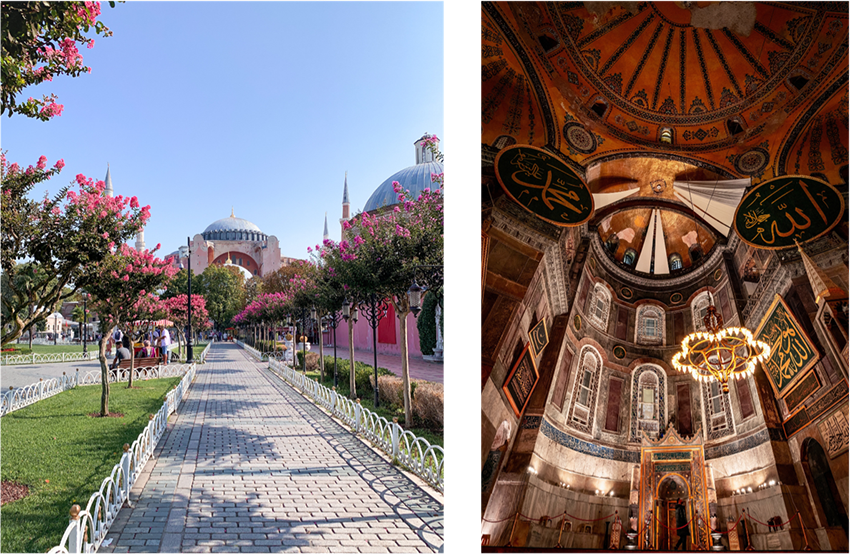
Image credits: Shifan Hassan on Unsplash ; Fatih Turan on Pexels
The Basilica Cistern is another recent re-opening, now offering an improved underground experience thanks to better lighting and cool, ethereal art installations. Incredible mosaic tiles can be found all around the Old City monuments, but no where are they more revered than at the Blue Mosque. In recent years, the beautiful azure, turquoise, powder-blue and muted pink Iznik tiles of the mosque have been obscured by restoration work, but they are once again visible since earlier this year.
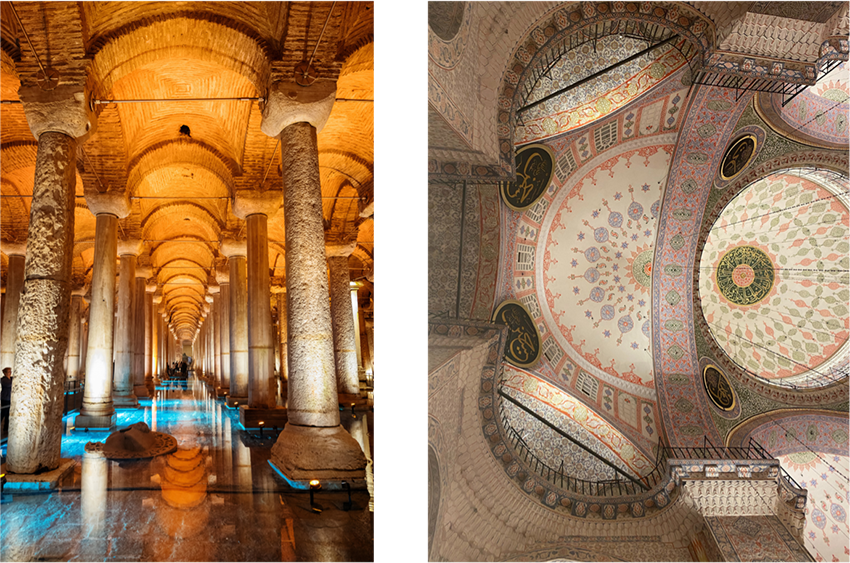
Image credits: frimufilms on Freepik ; Normalbirisiydi on Pexels
After a long day of sightseeing, it would be a good time to see what the Turkish hamam experience is all about. Get steamed, scrubbed, refreshed and relaxed. As mentioned above, the Kılıç Ali Pasha Hamam is one of the most beautiful – there are separate operating hours for men and women. In the Old City area, you can’t go wrong with a spa package at the Ayasofya Hürrem Sultan Hamam, designed and built by none other than Mimar Sinan, the chief Ottoman architect. Combining luxury and history, this double hamam has separate male and female quarters.
DAY 2: OLD BAZAARS, THE BOSPHORUS & BALAT
After another chance to sample different breakfast items, you can spend the morning in the Old City browsing the ancient covered markets. With Constantinople’s role as a major trading center along the Silk Road, it’s no surprise that the Grand Bazaar remains one of the largest covered markets in the world. Functioning as the link between Rome and the lands east of the Mediterranean, the markets of the city traded in luxury goods like Chinese silks, exotic spices, silver and gold. Today you’ll find woven carpets and kilims, colorful ceramics and Turkish lamps, jewelry, bags, trinkets and ornaments with the ‘evil eye’ and so much more.
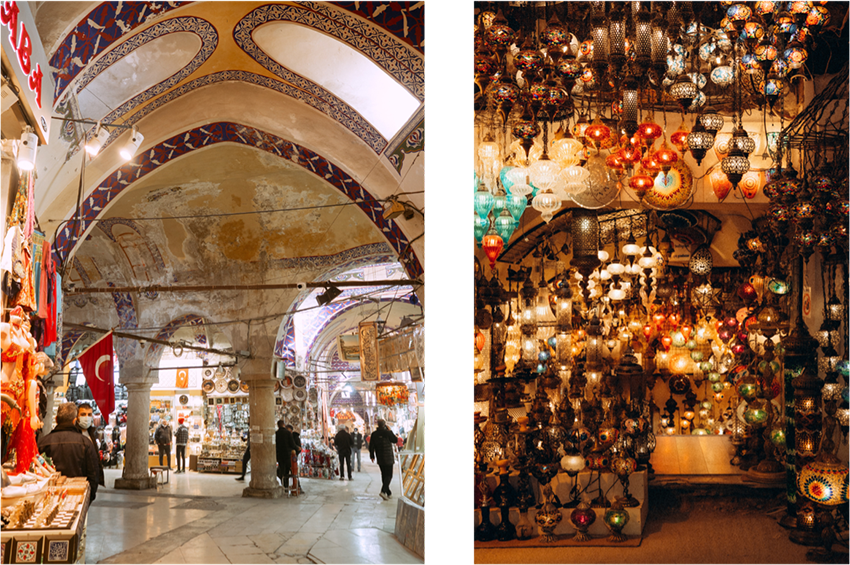
Image credits: Meruyert Gonullu on Pexels ; Yana Hurska on Unsplash
At the Spice Market, or Egyptian Market (Mısır Çarşısı), the passageways are lined with stalls overflowing with bright mounds of spices, loose tea and Turkish delight (lokum). Turkish coffee, nuts and dried fruits are other favorite purchases. These dried products all make great, easily packable gifts to take home with you! Another special monument to check out before leaving this area is the huge Sülemaniye Mosque, which has a beautiful interior and courtyard, and sits on top of a hill with its many domes looking out over the Bosphorus.
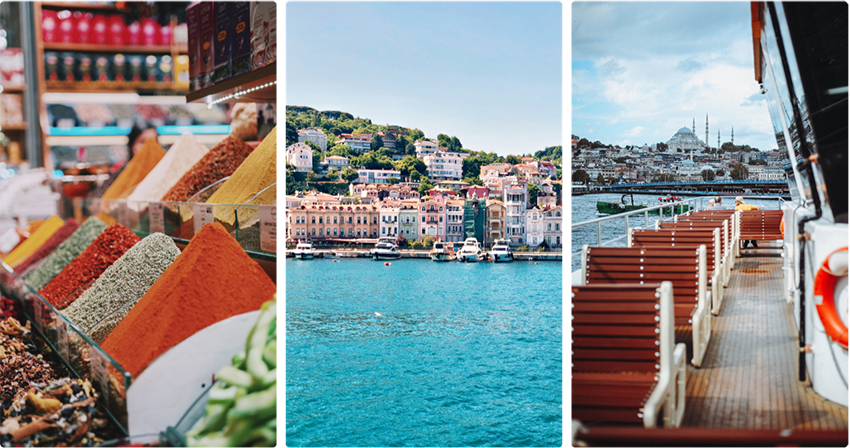
Image credits: Linus Mimietz on Unsplash ; Despina Galani on Unsplash ; Daka on Pexels
Next, you can stroll across (or under) the main road to reach the harbor at Eminönü and join a sightseeing boat tour of the Bosphorus. These join-in boat rides are easy to find and last about an hour, so you have time to appreciate the defining characteristic of the city and take photos of the enviable waterfront mansions and historic palaces. Refreshments are available for purchase on board so you can sip a glass of tea as you go. Private yachts are also available to hire for a couple of hours for a more luxury experience, with the same marvelous views.
After your boat tour drops you back off around the Golden Horn, you can go explore the vibrant streets of Fener and Balat. If you’ve ever admired influencer photos framing rows of rainbow-colored Ottoman houses as they rise up steep cobblestone lanes, this is that place! Many of these old buildings are wonderfully restored with fresh paint, and others delight a sense of wistfulness and imagination. This neighborhood is so full of authentic old Istanbul with children playing in the streets, workers chatting outside their shops, tea gardens and laundry hanging, combined with eye-catching pops of color, it’s quite often used as a backdrop for local TV and film productions. Spend a very pleasant afternoon wandering the streets up to the gorgeous red brick building that holds the Greek Orthodox High School. Poke around the boutiques for unique jewelry, antiques and handmade items, have a refreshment in one of the many cute cafes, and take photos at the rainbow staircase. When you get hungry, you could have dinner at Agora Meyhanesi, one of Istanbul’s most storied taverns, started by a Greek naval captain – a night here with raki and meze will wrap you in the warm embrace of Mediterranean culture.
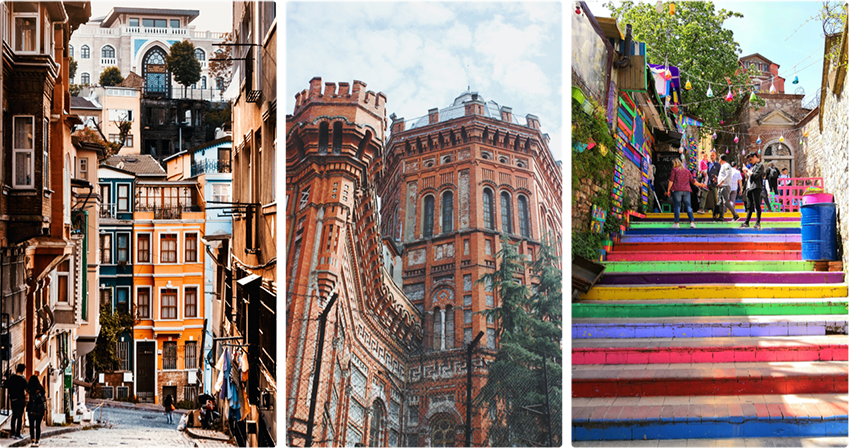
Image credits: Volkan Vardar on Unsplash ; Damla Özkan on Unsplash ; Antonio Sessa on Unsplash
DAY 3: GALATA, PERA, KARAKOY & TURKISH STREET FOOD
Today it’s time to discover a different world away from the Ottoman bazaars and realm of the sultans, in an area that saw its heyday in the late 19th century, when passengers of the Orient Express made their way to the exotic city of Istanbul.
Take the day to walk your way through the neighboring districts of Pera, Galata and Karaköy. Start around the grand Pera Palace Hotel, which has seen such illustrious guests as Agatha Christie, Greta Garbo, and Mustafa Kemal Atatürk, the father of the Turkish Republic. Just up the street is the Pera Museum, where you can find excellent visiting and permanent collections, particularly the works of the great Ottoman painter-archaeologist Osman Hamdi Bey.
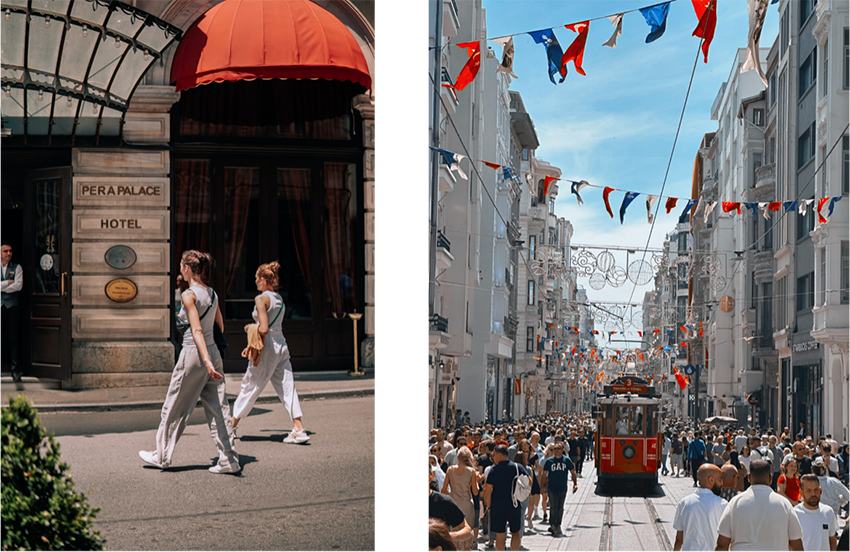
Image credits: Beyza on Pexels ; Sami TÜRK on Pexels
Squeeze your way through the backstreets lined with pubs and street food vendors and come out at Istiklal Avenue(formerly the Grand Rue de Pera). Don’t miss the ‘European Passage’, an attractive 19-century shopping arcade filled with colorful souvenir items and antique shops, and the ‘Flower Passage’, lined not with flowers but with touristic fish restaurants.

Image credits: bahalar on Pexels ; Svetlana Gumerova on Unsplash
Take a walk along Istiklal, the wide bustling avenue seen with its historic red tram in most Istanbul souvenirs, and point yourself toward the Bosphorus to head down into the Galata district. As you go, this is a great place to start sampling Turkish street foods from the vendors with their little red carts. First you have the ubiquitous simit - chewy, crunchy and versatile. Other common snacks are roasted chestnuts and steaming hot ears of grilled or boiled corn. Mussels stuffed with rice is also a popular nibble, especially for those coming home from the bars. The ice cream sellers will call to you from their windows on Istiklal - wearing traditional costumes, they entertain with tricks one could only pull off with the sticky Turkish ice cream.
Pass by the Galata Mevlevi Lodge (which holds whirling dervish performances) and along a street filled with musical instrument shops and independent boutiques selling Turkish towels, olive oil soaps and unique clothing. Take a moment to refresh yourself with a fresh-squeezed juice at a “vitamin” stand. You can easily spot them by their vivid displays of oranges, pomegranates, apples, etc. And why not also try döner kebab alongside a surprising salted yogurt drink called ayran?
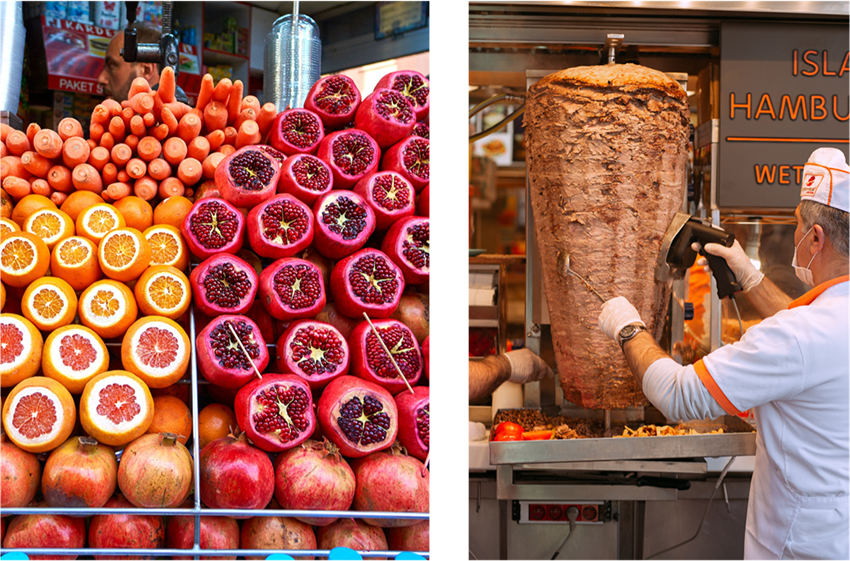
Image credits: PxHere ; Meruyert Gonullu on Pexels
Arrive at a small but lively square in the historic Galata quarter, set on the northern bank of the Golden Horn, where large numbers of Sephardic Jews began to reside starting in the 1930s. You’ll know you’ve arrived because of the iconic Galata Tower - take some time to go up the tower for an incredible birds’ eye view over the city.
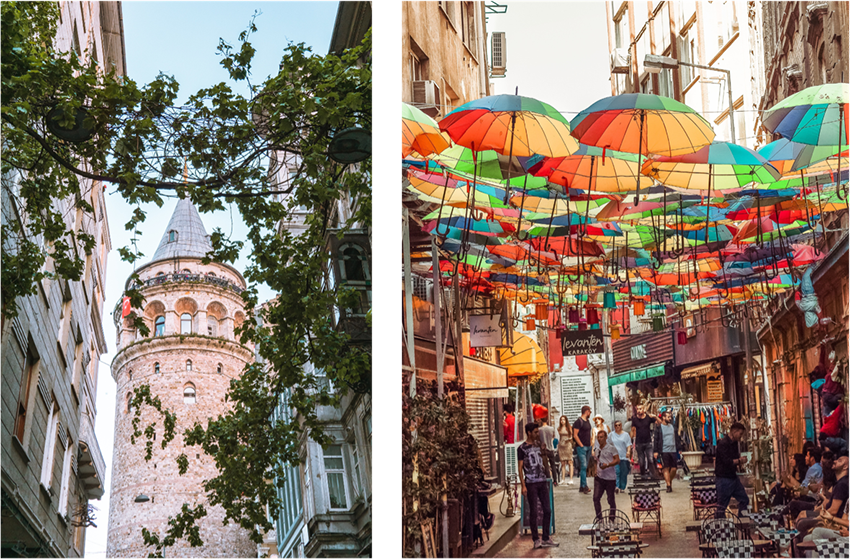
Image credits: Jean Carlo Emer on Unsplash ; Özgür ÜNAL on Unsplash
Continue down the hill to the waterfront and come to Galata Bridge. To the left of the bridge is the neighborhood ofKaraköy, which has seen some of the most changes in recent years. It’s full of even more trendy shops and cafes and new five-star hotels, thanks to the opening of Galataport. Walk through the streets of Karakoy to stop for a coffee, do some shopping and of course have a sweet break with baklava at Güllüoğlu. A notable point here is the historic ‘French Passage’, where you can find nice eateries and boutiqes.
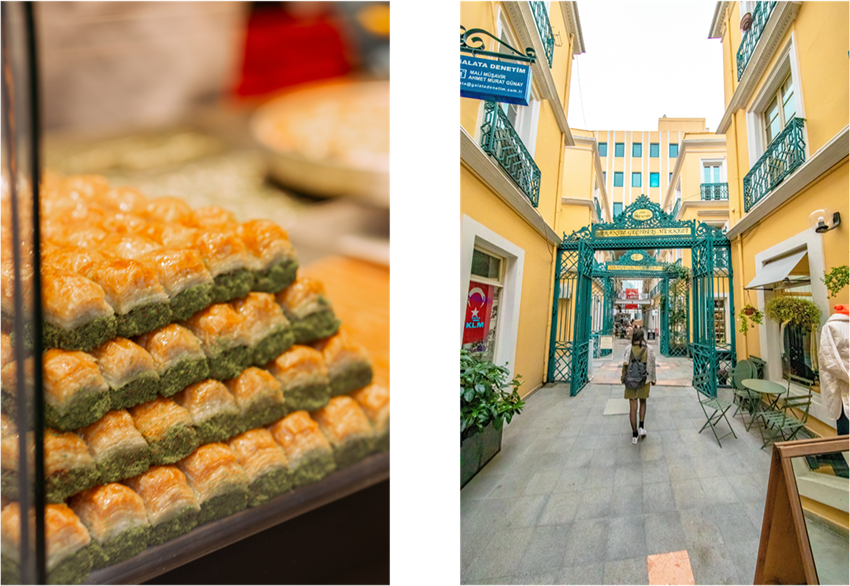
Image credits: Meruyert Gonullu on Pexels ; Sina HN Yazdi on Unsplash
Finally, you’ll come to the long waterfront promenade at the modern cruiseship harbor. Here you’ll find the newly-renovated Istanbul Modern, and an open-air shopping mall with some of the best local and international fashion brands and nice restaurants with views.
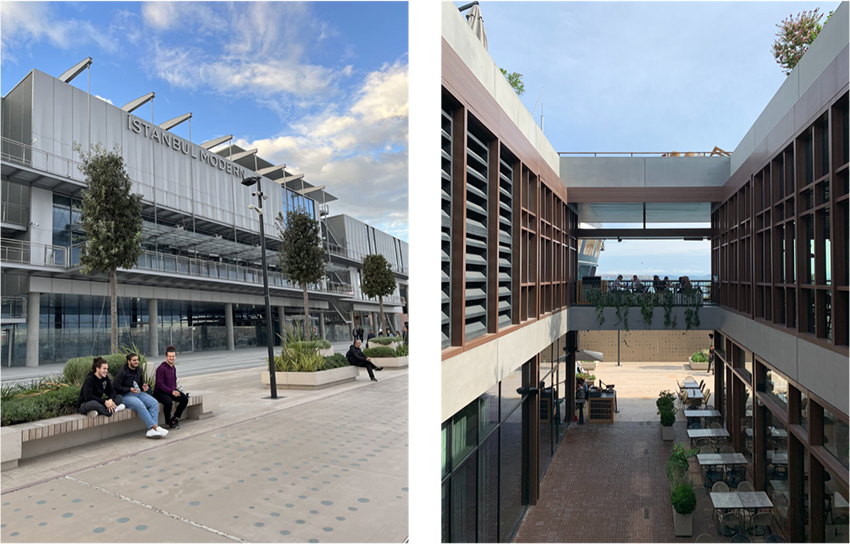
Image credits: Parametric Architecture ; Gökhan Kara on Unsplash
Depending on the location of your hotel, you may finish with a ride back up to Istiklal on the historic Tünel funicular - which is the second-oldest underground train in the world (after London’s, 1863) - or you could take the tram or walk across Galata Bridge back into the Old City area. If you’ll be departing on a cruise and you’ve had a guide for the day to help you arrange your luggage transfer, then you’re already right where you need to be for a smooth embarkation.
DAY 4: BONUS DAY!
In truth, the previous days have only scratched the surface of Istanbul’s potential. If you want to see more of the city’s modern side, with history at every turn, it’s worth spending another day. These are some of our favorite places …
We start with one of the more obvious attractions, the grand Dolmabahçe Palace, standing proudly in striking white marble along the European shore of the Bosphorus. The residence of the last six Ottoman Sultans, it gives opulence a whole new meaning.
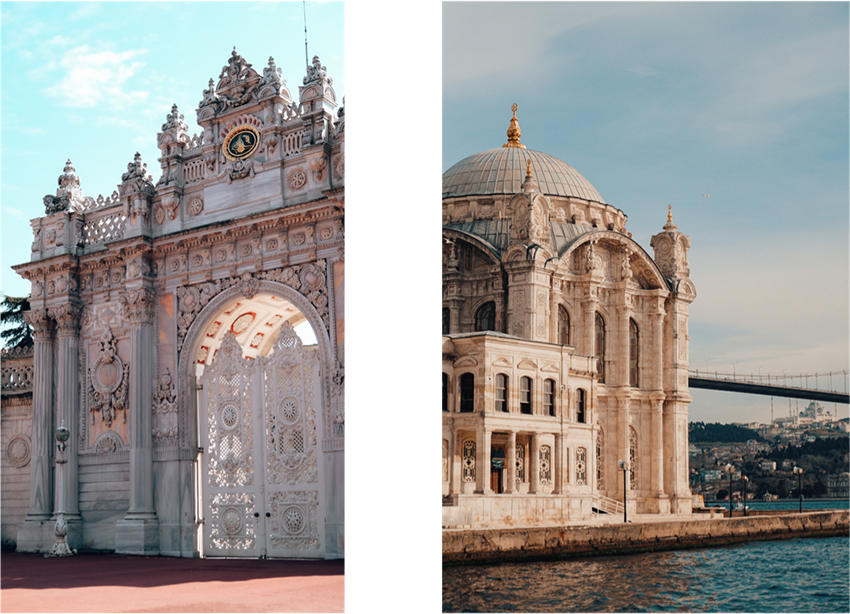
Image credits: YEŞ on Pexels ; Abdullah Al Mallah on Pexels
Just up the coast you’ll find the neigborhood of Ortaköy, where you can capture one of the city’s most photographed scenes – the beautiful baroque-style mosque framed by the ‘First Bridge’, Istanbul’s oldest suspension bridge connecting the European and Asian sides.
You could also take a ferry over to the Asian side for the day. The areas of Kadıköy and Moda, known for their more alternative style, are beloved by locals and expats. For visitors, the highlight of Kadıköy is its daily street market selling fruits, veggies, meat, prepared foods, teas, soaps, dried goods, baked goods, food in jars, fish and other delights. Neighboring Moda welcomes you with an artsy vibe, inviting you to take a break at a trendy coffee shop and enjoy a leisurely stroll along the long stretch of seaside. To the north, around the historic Üsküdar area, you can visit Beylerbeyi Palace, built as a summer residence for the sultan.
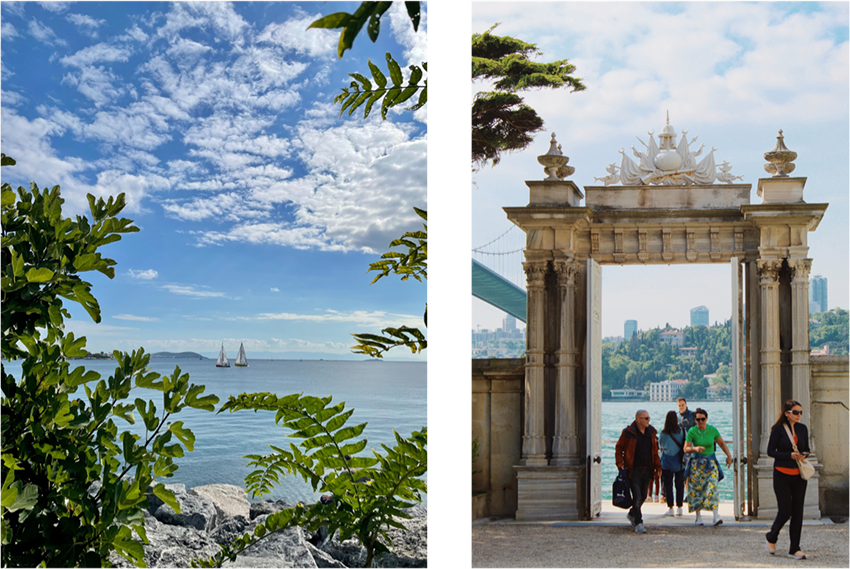
Image credits: İlke Yazgan on Unsplash ; sena keçicioğlu on Pexels
Then treat yourself with a walk through the colorful and nostalgic neighborhood of Kuzguncuk. For centuries, this waterfront district was home to a mix of Jews, Greeks, Armenians and Turks, evidenced by the synagogues, churches and mosques that rise side by side in their tradition of peaceful coexistence. It’s a simple pleasure to walk the streets taking pictures of the clusters of typical Ottoman wooden houses decked out in bold colors. Stop in at the bakery, the chocolatier, the bookstore/coffee shop, and choose from among several small eateries for a home-cooked meal.
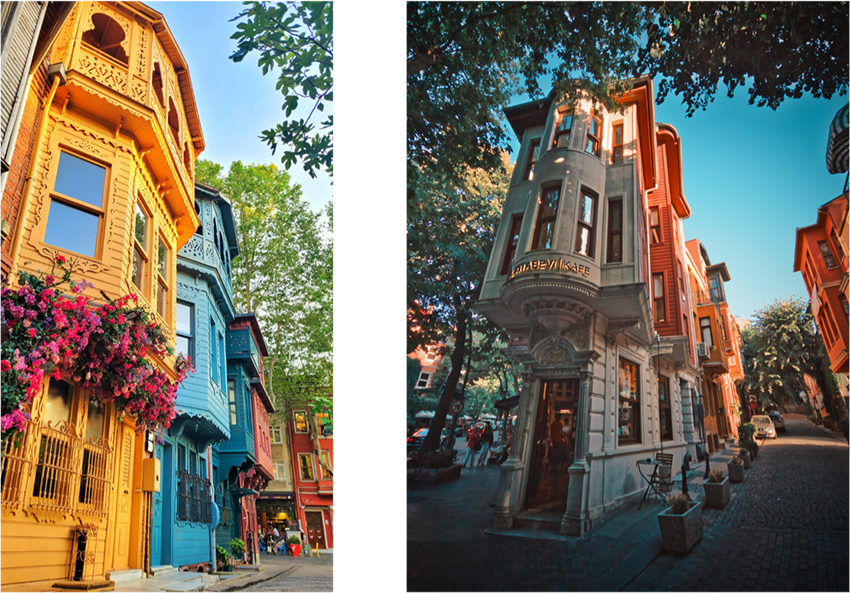
Image credits: Süheyl Burak on Unsplash ; Ibrahim Uzun on Unsplash
If you are ready to start planning your trip, we can customize an itinerary, discuss hotel choices, plus advise you on exploring the rest of Türkiye. Please call or email us now at 1-781-826-7610 or [email protected]. We’re always happy to discuss our favorite city, Istanbul!